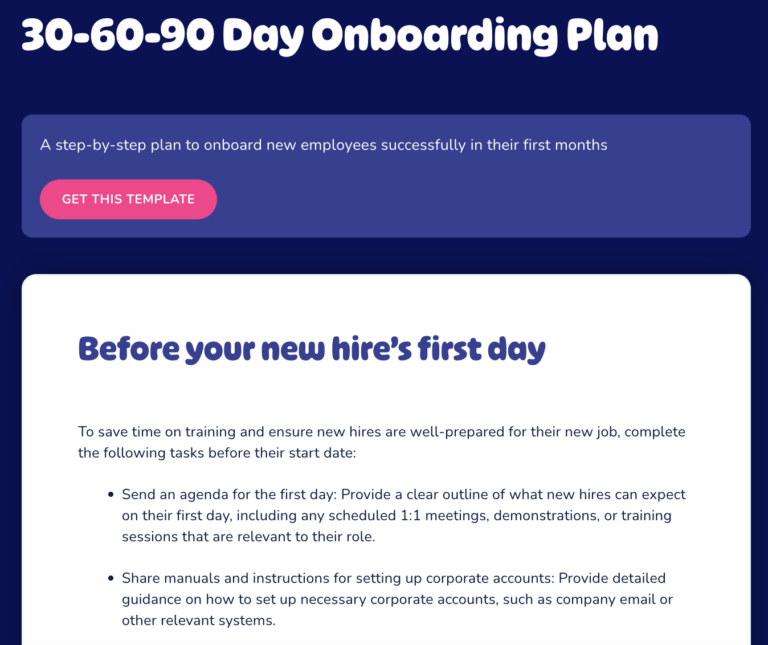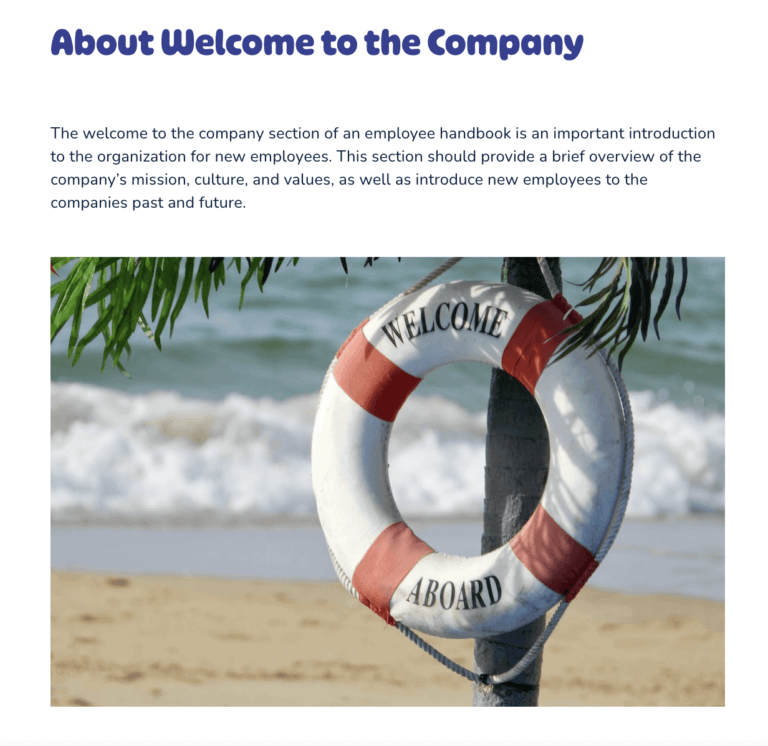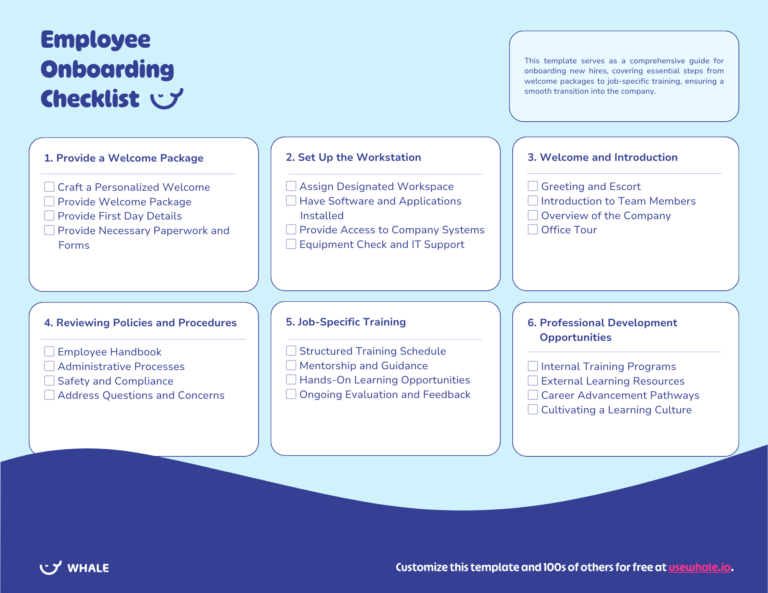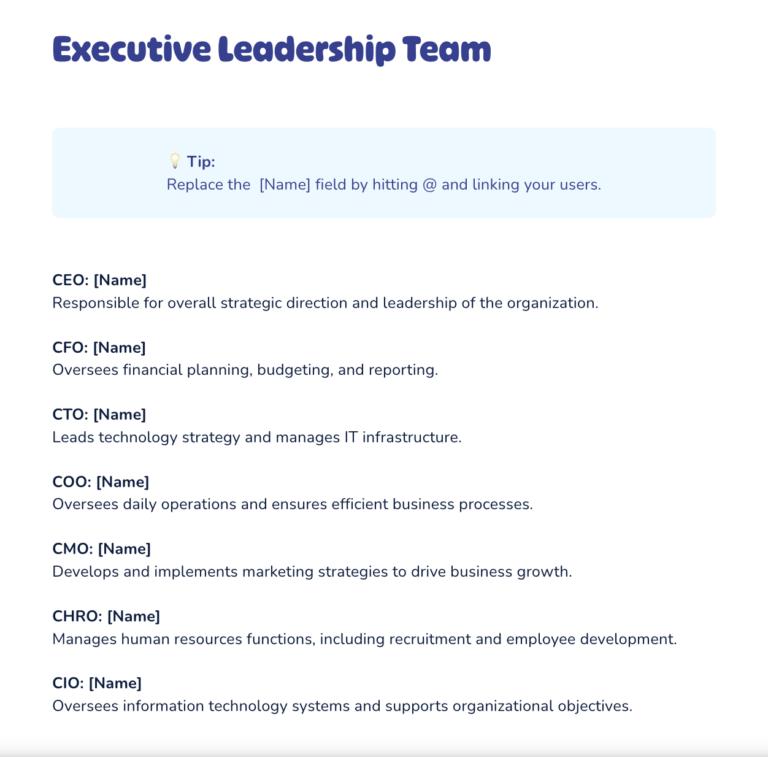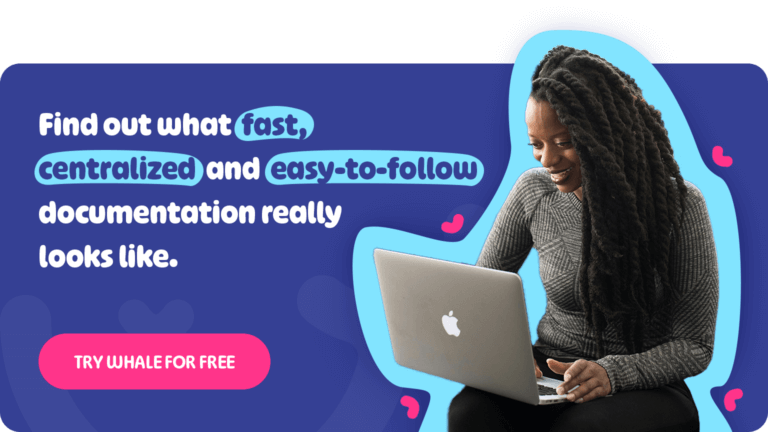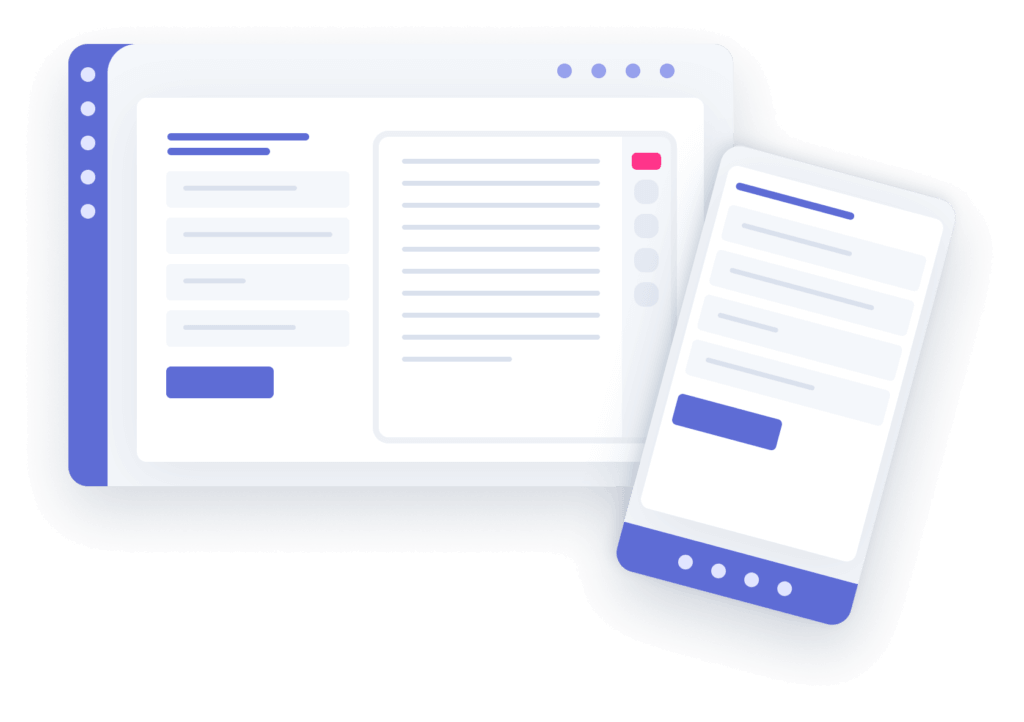But there’s a solution that can change this narrative—must-have employee onboarding templates. These templates are the backbone of a smooth onboarding process, helping to eliminate confusion and set the stage for success.
In this article, we’ll delve into common onboarding challenges, provide actionable solutions, and emphasize how using an employee onboarding template can transform your onboarding process into a streamlined and efficient experience.
What is an employee onboarding template?
An onboarding template is a structured document designed to welcome and integrate new hires into your organization. It serves as a roadmap, outlining essential steps, tasks, and information needed for a smooth onboarding process.
Templates help ensure consistency and thoroughness, streamline administrative tasks and reduce the risk of missing crucial steps. They also standardize the experience for new hires, making them feel part of the team and fostering a positive work environment.
A well-structured onboarding process can boost employee engagement, reduce turnover rates, and enhance overall job satisfaction. According to research, organizations with a robust onboarding process improve new hire retention by 82% and productivity by over 70%. Therefore, having a comprehensive employee onboarding template is not just beneficial but necessary for ensuring a smooth and effective transition for new hires.
What an onboarding template includes?
An effective employee onboarding template is a crucial tool for ensuring a smooth transition for new hires, setting them up for success right from the start. Here’s a detailed breakdown of what a comprehensive onboarding template should include and why each element is essential:
- Welcome message: Begin with a warm introduction from the company’s leadership—such as the CEO or Managing Director—outlining the company’s values, mission and vision. This message sets the tone for the new hire’s experience and helps them quickly grasp the company culture.
- Day-by-day plan: Provide a detailed schedule for the new hire’s first days or weeks. This plan typically includes orientation activities, training sessions, meetings with key team members, and any initial tasks or projects. A well-structured onboarding template helps new employees feel guided and supported from the beginning.
- Role and responsibilities: Clearly document the new employee’s job description, specific responsibilities, and performance expectations. This section ensures that new hires understand their role within the team and the broader organization, which is vital for their early success.
- Administrative tasks: Include checklists for essential paperwork, such as tax forms, benefits enrollment, and IT equipment setup. Streamlining these tasks in your new employee onboarding template ensures that nothing is overlooked, making the administrative side of onboarding seamless.
- Feedback and evaluation: Establish guidelines for regular check-ins and evaluations to monitor the new hire’s progress. This section should include feedback mechanisms to address any concerns or issues early on, providing support where needed and reinforcing the importance of continuous improvement.
Benefits of Using an Employee Onboarding Template
Implementing an employee onboarding template brings numerous advantages to organizations. It not only ensures consistency but also streamlines administrative tasks and fosters a positive employee experience. These benefits translate into better engagement, faster productivity, and increased retention. Let’s dive into the key benefits of using an effective onboarding template:
- Ensures consistency across the organization
With a standardized onboarding template, every new hire undergoes the same structured process, ensuring a uniform experience across departments and roles. This consistency helps maintain a cohesive organizational culture and sets clear expectations for all employees.
- Streamlines administrative processes
An employee onboarding template organizes all the administrative tasks that need to be completed when a new hire starts. This reduces the risk of overlooking important steps and ensures that all necessary documents and processes are handled efficiently.
- Enhances employee engagement and satisfaction
A well-structured onboarding process, guided by a new employee onboarding template, makes new hires feel welcomed and valued, significantly boosting their engagement and overall satisfaction.
- Reduces time to productivity
By clearly outlining the onboarding process and providing the necessary training and resources upfront, new hires can become productive more quickly. This reduces the learning curve, allowing them to contribute to the team and organization sooner.
- Promotes retention and reduces turnover
A positive onboarding experience, facilitated by an effective onboarding template, helps reduce employee turnover by making new hires feel connected to the company and their colleagues. When employees are well-integrated and understand their role and the company culture, they are more likely to stay with the organization long-term.
- Facilitates compliance and reduces legal risks
Ensuring that all necessary paperwork and training are completed promptly helps organizations stay compliant with employment laws and regulations. This reduces the risk of legal issues arising from incomplete documentation or lack of employee awareness regarding company policies.
What are the must-have employee onboarding templates?
Every company may have its own unique approach to managing new hires, but certain employee onboarding templates can make a massive impact on the overall onboarding experience. Here are the essential ones you shouldn’t overlook:
1. The 30-60-90 Day Onboarding Plan
This is the template you need! The 30-60-90 Day Onboarding Plan starts guiding the onboarding process even before day one, outlining detailed steps for information delivery, meeting schedules, introductions, and ongoing support throughout the new employee’s first three months. This template is crucial for helping new hires get up to speed and excel quickly. In fact, research shows a 60% year-on-year improvement in revenue for organizations that use a structured onboarding approach like this.
2. Welcome to the Company template
Kick off the onboarding process with a comprehensive introduction to your company. The Welcome to the Company template should include a message from your Managing Director or CEO, along with your company’s values, mission, and vision. This template helps new hires understand the core principles they’re expected to embrace, setting a positive tone from the start.
3. Complete Onboarding Checklist template
Think of this as your roadmap to successful onboarding. The Complete Onboarding Checklist template ensures that every crucial task—from completing paperwork to making personal introductions—is handled meticulously. It maintains consistency and guarantees that nothing is overlooked during the onboarding process, making it a key component of your new employee onboarding template.
4. People Directory Template
Make it easy for new employees to navigate your organization with the People Directory template. This template offers a comprehensive list of team members, organized by departments and roles, along with their contact details. It’s an invaluable tool for helping new hires quickly learn who does what and whom to contact for various needs, ensuring they feel connected and supported right from the start.
Where do we start with introducing a new employee onboarding template?
Now that you know which employee onboarding templates are essential, it’s time to introduce them effectively into your organization:
Assess your current processes
Start by evaluating your existing onboarding processes to pinpoint pain points, inconsistencies, or gaps. Understanding these issues will help you customize your new templates to better suit your needs.
Define your objectives
Clearly outline what you want to achieve with your new onboarding templates—whether it’s streamlining paperwork, improving information retention, or enhancing the overall onboarding experience.
Add your personality
Customize the templates to reflect your company’s unique culture and values. This personalization makes the onboarding experience more engaging and ensures it aligns with your company’s ethos.
Collaborate with your team
Involve HR personnel, department heads, and recent hires in developing and reviewing the templates. Collect feedback to ensure the templates meet everyone’s needs and truly improve the onboarding experience.
Train your staff
Once your templates are finalized, train your HR and onboarding teams on how to use them effectively. This ensures consistency and smooth implementation across the organization.
Implement gradually
Roll out the new employee onboarding templates gradually. This allows you to monitor their effectiveness, gather feedback, and make necessary adjustments based on real-world use.
Bottom line?
Employee onboarding templates are invaluable for internal operations and can significantly impact how your business is perceived externally. A well-crafted onboarding experience positively influences employee perceptions, boosts job satisfaction, increases retention, and enhances productivity.
So, why wait? Start optimizing your onboarding process today—you won’t regret it! Remember, employee onboarding is a critical component of any successful organization. A well-structured process, supported by a comprehensive employee onboarding template, can significantly enhance employee engagement, retention, and productivity. By addressing common onboarding challenges and implementing effective strategies, you can create a positive and welcoming experience for new hires, setting them up for success from day one!
Marketing Process
Ensure that your organisation’s products or services are effectively promoted to the target market, while generating leads and driving sales.
HR Process
A guidebook or reference manual for HR professionals and managers, outlining the steps and procedures to be followed in various HR activities.
Never start from scratch again
Take a dive into Whale’s SOP, process and policy templates! You’ll find all the fundamental how-do-we-do-thats you need to document your business’s procedures and train your team.




